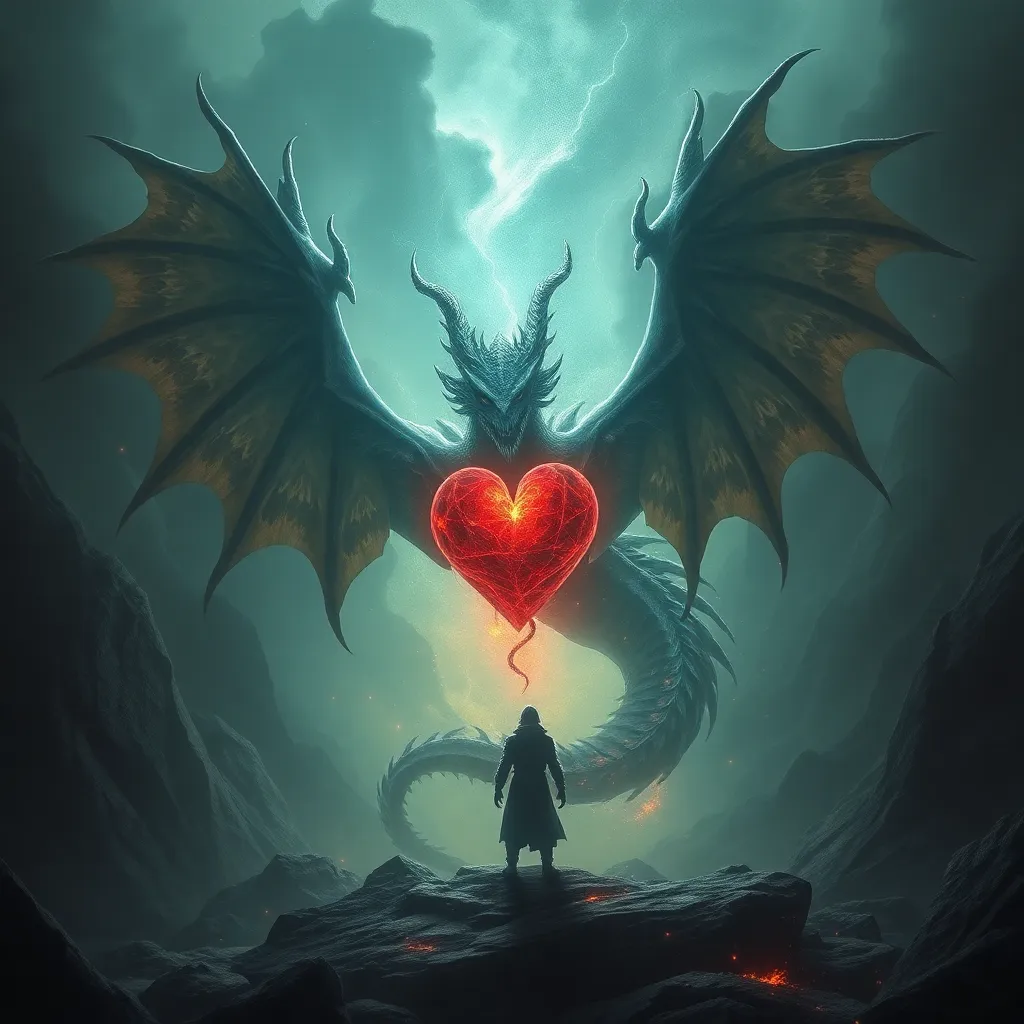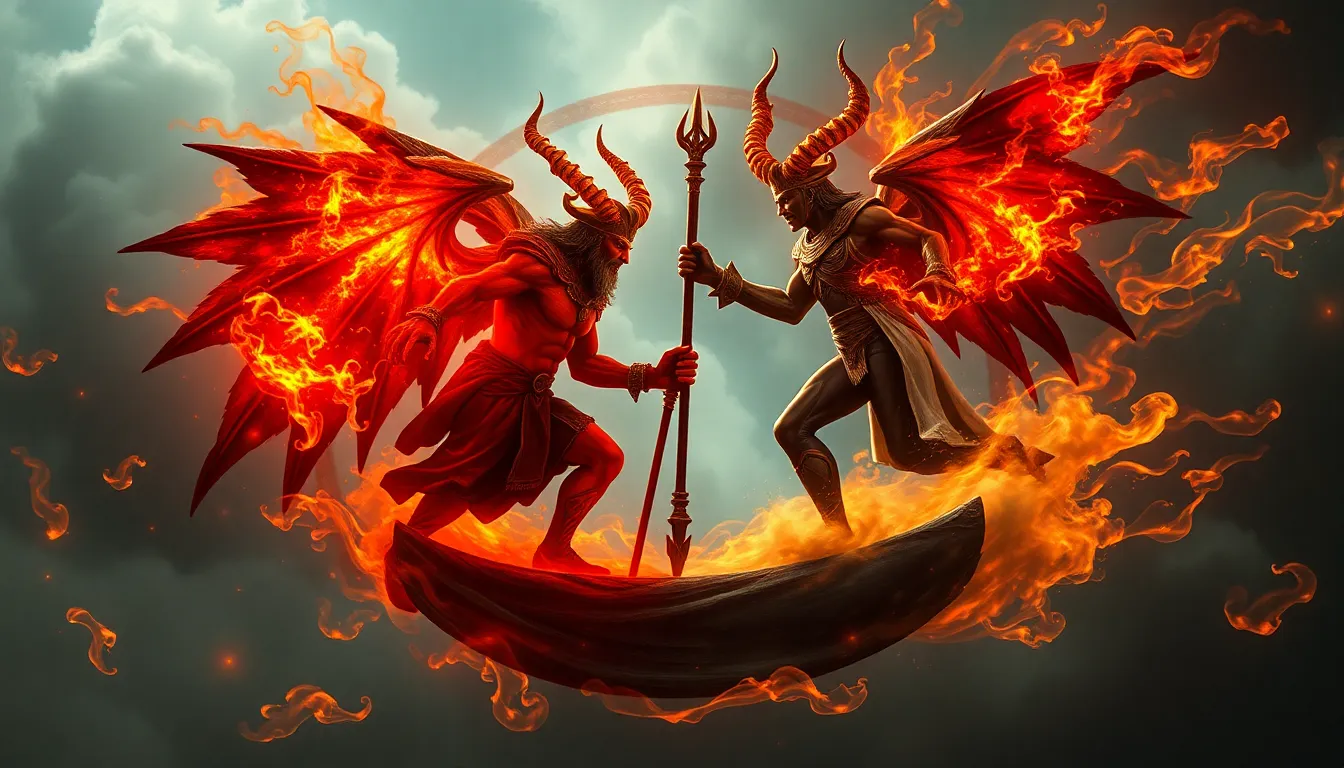The Dragon’s Heart: Fafnir’s Internal Struggle and Redemption
I. Introduction
Fafnir is one of the most iconic figures in Norse mythology, representing the complex interplay between greed, power, and transformation. Initially a man, Fafnir became a dragon, symbolizing the deep-seated avarice that ultimately consumed him. As a dragon, he stands as a powerful emblem of the consequences of unbridled desire and the isolation it brings. This article explores Fafnir’s internal struggle and journey towards redemption, examining how his tale resonates with themes of personal growth and the eternal battle between good and evil.
II. Fafnir’s Origins: The Transformation from Man to Dragon
Fafnir’s story begins in human form, born to the line of the powerful dwarf king Hreidmar. He had two brothers, Regin and Otter, and together they were destined for greatness. However, Fafnir’s tale took a dark turn due to the insatiable greed that plagued his family.
- Background on Fafnir’s human form and family ties: Fafnir, along with his brothers, initially had a strong bond, but their fates diverged due to the curse of the gold.
- The role of greed and the curse of the gold: After their father, Hreidmar, was killed for the cursed gold, Fafnir’s greed took hold, leading to a tragic rivalry with his brother Regin.
- The metamorphosis into a dragon: Fafnir’s transformation into a dragon was both physical and psychological, reflecting his complete surrender to greed. He became a fearsome creature, embodying the very essence of his avarice.
III. The Weight of Greed: Fafnir’s Internal Conflict
As Fafnir guarded his hoard of treasure, he became increasingly isolated, leading to an internal conflict that tormented him. The wealth he so desperately desired turned into a prison.
- The impact of avarice on Fafnir’s relationships and psyche: The greed that drove Fafnir to become a dragon also severed his ties with his family, leaving him in solitude.
- The loneliness of guarding the treasure: Fafnir’s isolation deepened his despair, as he found himself alone with his thoughts, haunted by the consequences of his choices.
- Moments of reflection: Throughout his existence as a dragon, there were fleeting moments where Fafnir exhibited signs of remorse, hinting at a struggle between his desires and a yearning for redemption.
IV. The Hero’s Journey: Siegfried and the Confrontation
Enter Siegfried, the archetypal hero destined to confront Fafnir. This encounter symbolizes more than just a physical battle; it represents the clash between good and evil, desire and virtue.
- Introduction of Siegfried: Siegfried is often portrayed as the quintessential hero, brave and noble, embodying the ideals of honor and courage.
- Fafnir’s encounter with Siegfried: The confrontation is not merely a fight; it is a clash of ideals, where Siegfried represents the possibility of redemption and a new beginning.
- The fight as a metaphor: The battle can be seen as a metaphor for Fafnir’s internal struggle, as he grapples with his own demons while facing Siegfried.
V. The Turning Point: Fafnir’s Realization
The moment of Fafnir’s defeat becomes a crucial turning point in his story. As he lies dying, he reflects on his life choices, offering a poignant moment of clarity.
- The moment of defeat: This event is significant, as it forces Fafnir to confront the reality of his existence, a stark contrast to the power he once held.
- Fafnir’s reflections: In his final moments, he realizes that the treasure he coveted brought him only misery, leading him to question the nature of his curse.
- The symbolism of death and rebirth: Fafnir’s death symbolizes a rebirth, both for him and for the narrative of greed, illustrating that true transformation often comes at a great cost.
VI. Redemption: The Legacy of Fafnir’s Story
Fafnir’s tale leaves a lasting impact on Norse mythology and serves as a cautionary story about the perils of greed.
- The impact of Fafnir’s transformation: His story became a central theme in Norse lore, teaching future generations about the dangers of unchecked ambition.
- Lessons learned: Fafnir’s narrative contrasts greed with wisdom, illustrating that true wealth lies in connections with others rather than material possessions.
- The enduring nature of Fafnir’s tale: Today, Fafnir’s story continues to resonate in contemporary culture, reminding us of the importance of self-awareness and the potential for redemption.
VII. Comparative Analysis: Fafnir and Other Mythological Figures
Fafnir is not alone in his struggles; many mythological figures share similar journeys of transformation and redemption.
- Similarities with other dragons: Many cultures depict dragons as embodiments of greed and destruction, such as Smaug in J.R.R. Tolkien’s “The Hobbit.”
- The archetype of the fallen hero: Fafnir’s story aligns with other redemption arcs in literature, illustrating the universal theme of falling from grace and seeking atonement.
- Modern themes: Fafnir’s internal struggle mirrors contemporary themes of personal growth, showcasing that the battle against one’s inner demons is timeless.
VIII. Conclusion
Fafnir’s journey from greed to redemption encapsulates a powerful narrative that resonates through the ages. His internal struggles reflect broader themes found in many mythological tales, emphasizing the importance of introspection and the potential for change. Understanding Fafnir’s story allows for a deeper appreciation of the complexities of human nature, illustrating that even the darkest paths can lead to enlightenment and redemption.



